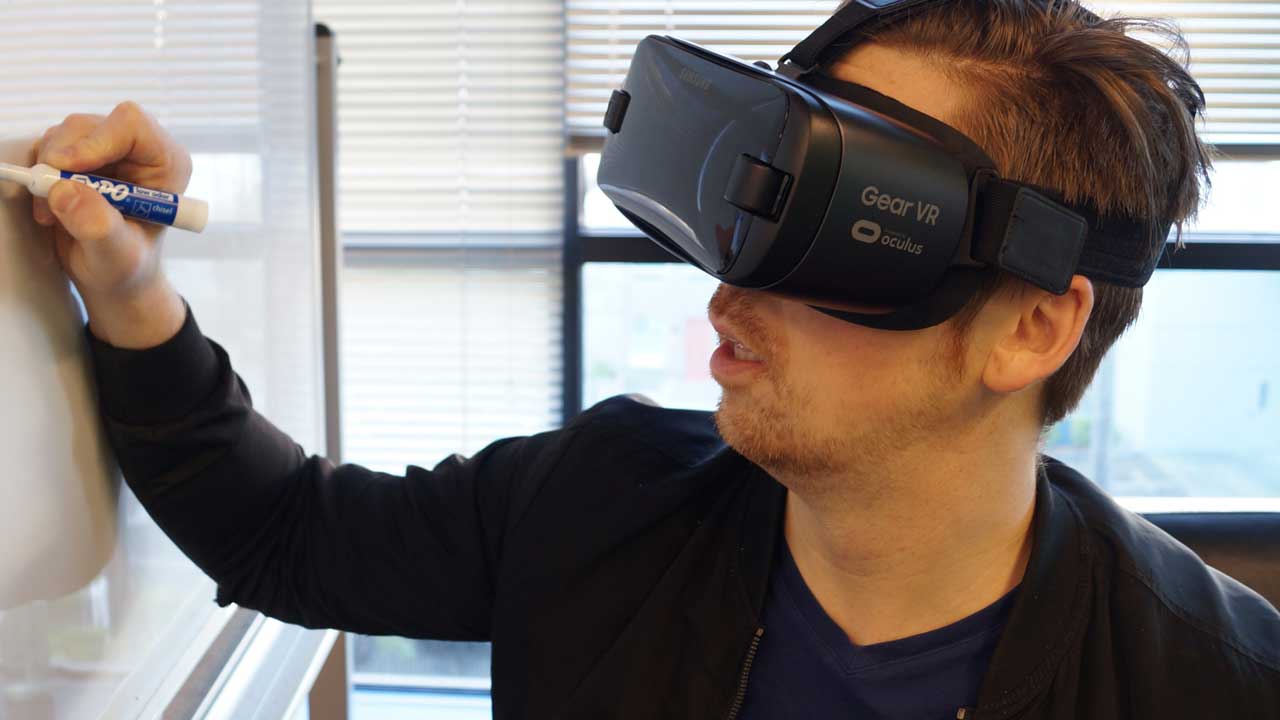
18 Dec How Virtual Reality is Used in Corporate Training
Virtual Reality (VR) technology has advanced to be able to create cyber experiences for the masses that immerse an individual in a new environment where the senses are engaged. The cost of the technology has dropped to the point where it fits corporate training budgets. It is no wonder the use of VR in the corporate training segment has exploded. The immersive environment allows individuals to make mistakes with no real-world consequences and for participants to experience situations once reserved for real life.
Learning how others are using VR can help us formulate our own thoughts on if and how this technology can help our own organization. Below are just a few examples of the different industries at the forefront using VR to train personnel.
HEALTHCARE
Medical professionals are now able to master procedures with no danger to real people. At Hammersmith Hospital in the UK in a small operating theater under the hospital, surgeons are practicing scenarios where surgeries can go wrong and practice techniques to employ for best case outcomes.
Nurses can master skills through VR such as inserting a catheter, starting an IV and administering CPR.
In Canada, clinicians affiliated with the University of Montreal have developed a useful but somewhat simple virtual reality simulator, SIM-K, which teaches young doctors how to perform complex knee replacements.1
LAW ENFORCEMENT
Using the technology to teach law enforcement personnel how and when to employ non-lethal and lethal weapons is being used by the Morris County Public Safety Training Academy in Morristown, NJ, that serves law enforcement personnel in the surrounding area.
Increasingly VR is being used to train officers how to speak to a suspect so an encounter does not escalate into a potentially dangerous confrontation.
OIL INDUSTRY
Oil production workers operate within an inherently dangerous work environment. Technicians and production workers learn and practice through VR how to react to potentially dangerous situations minimizing risk to human life should the actual situation occur. A good example is an oil rig fire.
The industry is using this technology to help curb the worker shortage by turning out fully qualified rig workers trained through immersive experiences.
AUTOMOTIVE
Toyota used virtual reality as part of its TeenDrive365 campaign to educate teenagers and parents about distracted driving by immersing participants in different driving situations.
EDUCATION
VR is opening new ways for students to learn. Engineering students can have hands-on experiences not afforded them in traditional education such as experiencing the design and build process.
Field trips can be taken to faraway places around the globe for students to experience first-hand what previously could only be read about.
PROFESSIONAL SPORTS
The NFL, NBA, NHL, and WNBA are all using VR to train both young and veteran players to respond to various potential game situations. Players can experience the outcome of their actions without stepping on the game field or court.
SKILLED TRADES
Facing a shortage of skilled workers, trades such as welding are using VR to help train new welders cheaper and faster.
Purchasing materials for novice welders to learn the trade can get expensive, not to mention dangerous. Beginning the training experience in the virtual world allows participants to attain a level of mastery before moving to full function welding equipment and real-life experiences.
ENGINEERING AND CONSTRUCTION
Engineering and construction company Bechtel uses Human Condition Safety’s SafeScan job training to virtual train its workers before sending them out on the job. SafeScan is a virtual reality immersion training method similar to realistic video games.2
With the virtual reality training, workers can practice challenging skills such as unloading a beam from a crane several stories high on a low visibility morning before they are asked to perform such a task out on the job.
You may not work in any of these industries but hopefully, these examples will help spur your imagination in ways to think how the technology could benefit your organization. The results attained for these industries mentioned is that Virtual Reality has helped people develop skills faster and perform jobs better.


